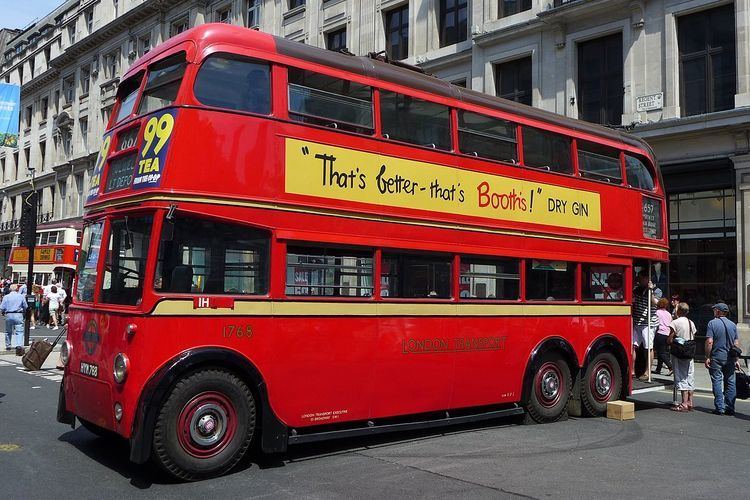Routes 68 | Status Closed | |
 | ||
Open 16 May 1931 (1931-05-16) Close 8 May 1962 (1962-05-08) Operator(s) London United Tramways(1931–1933)London Passenger Transport Board(1933–1947)London Transport Executive(1947–1962) | ||
Trolleybuses served the London Passenger Transport Area from 1931 until 1962. For much of its existence, the London system was the largest in the world. It peaked at 68 routes, with a maximum fleet of 1,811 trolleybuses.
Contents
History
The first 60 trolleybuses were operated by London United Tramways (LUT), from Fulwell bus garage in south-west London. They were nicknamed "Diddlers" and first ran on 16 May 1931 (1931-05-16).
In 1933 LUT was absorbed into the London Passenger Transport Board (LPTB) along with other tram operators. The LPTB decided to replace all trams with trolleybuses. This started in October 1935 with two more former LUT routes, and continued in stages until June 1940, when it was suspended because of World War II. By then nearly all the trams north of the River Thames had been replaced, but there were still 1,100 trams in use in South London. In 1946 it was decided that the remaining trams would be replaced by diesel buses. Trolleybuses were bigger than diesel buses (70 seats compared to 56), and so more diesel buses would be required. It was thought, however, that there would be fewer uncollected fares on the smaller vehicles.
In 1948 a new batch of 77 trolleybuses replaced the Diddlers and trolleybuses that had been destroyed by enemy action. A further 50 new trolleybuses were delivered in 1952 to replace the oldest vehicles, which were then 16 years old.
In 1954, it was announced that all trolleybuses were to be replaced with the exception of the post-war vehicles, which would be retained until about 1970 and run over the original LUT routes. Conversion began in 1959, using AEC Regent III RT buses for the first three stages and new AEC Routemasters for the remainder.
A consortium of Spanish operators bought the post-war vehicles. The former LUT routes were the last to be converted to diesel buses, on 8 May 1962.
Fleet
The trolleybuses were designed and built specifically to be worthy tram replacements. Like the trams, they were large high-capacity double deckers, with rapid acceleration. They had three axles (necessary as 30 feet long), and were much quieter in operation than contemporary trams or diesel buses. Trolleybuses were built on AEC, Leyland and British United Traction chassis.
Apart from the Diddlers and a few experimental vehicles, most London trolleybuses were near-identical. There was an exception: in 1941 and 1943 London Transport acquired 43 trolleybuses that had been ordered for South Africa but could not be shipped there because of the war. These vehicles were allocated to Ilford depot.
One experimental vehicle was proposed to be the forerunner of a fleet that would use the Kingsway tramway subway, but the change of policy after the war meant that this was never carried out.
Some trolleybuses are now preserved in the United Kingdom by the East Anglia Transport Museum, the London Transport Museum, the London Bus Museum and The Trolleybus Museum at Sandtoft. One of the 1948 vehicles has also been repatriated from Spain.
List of routes
At its peak, the network was the largest in the world, running 68 routes. The following is a list of the routes that were withdrawn in the replacement programme which ran from 1959 to 1962.
In July 1990, London Regional Transport introduced an express version of bus route 207 as route 607 between Uxbridge and Shepherds Bush, mirroring the former trolleybus that carried the same number.
Proposed revival
In 2012, it was proposed that a trolleybus based on the New Routemaster be introduced to address pollution concerns on Oxford Street.
